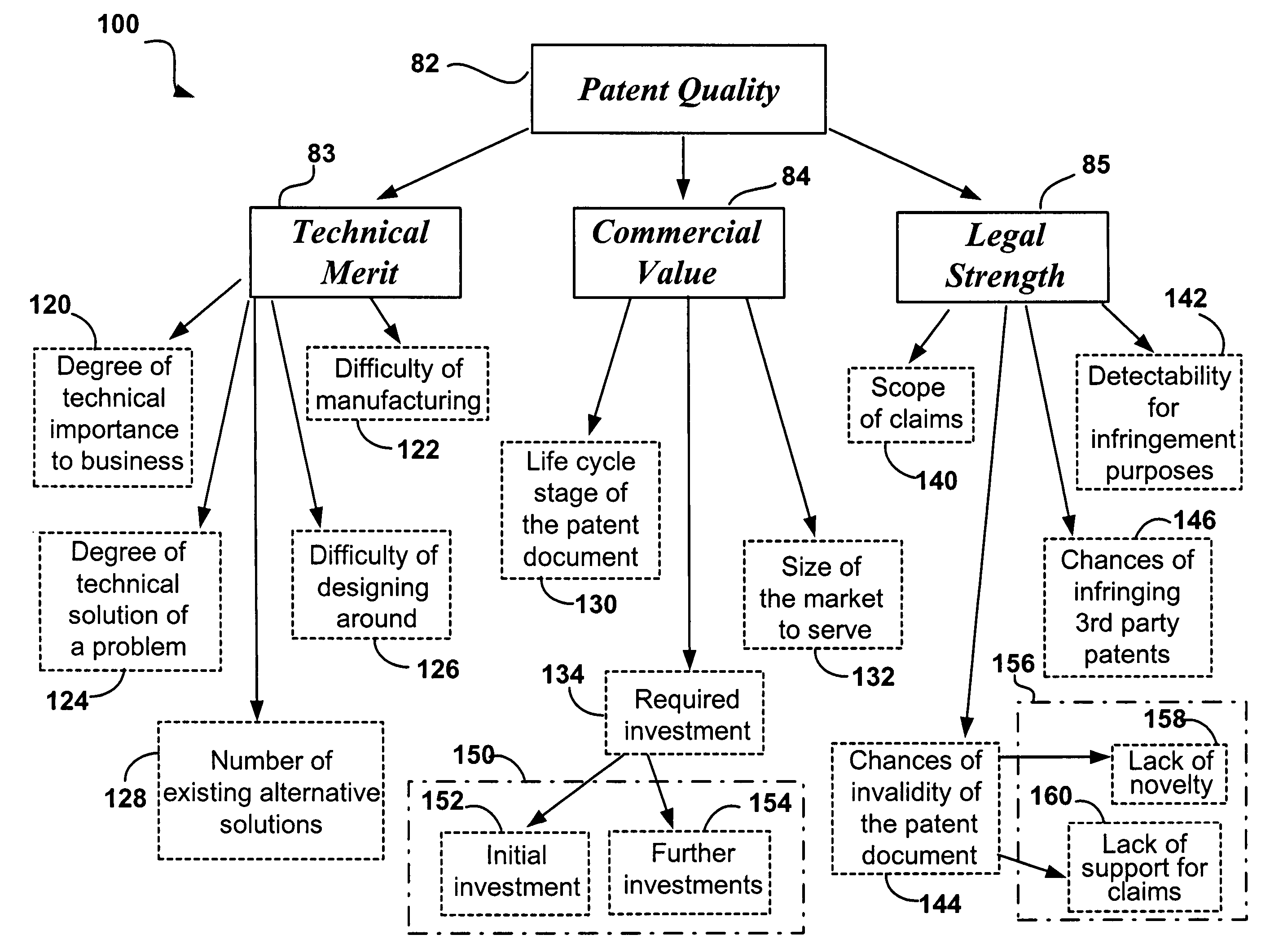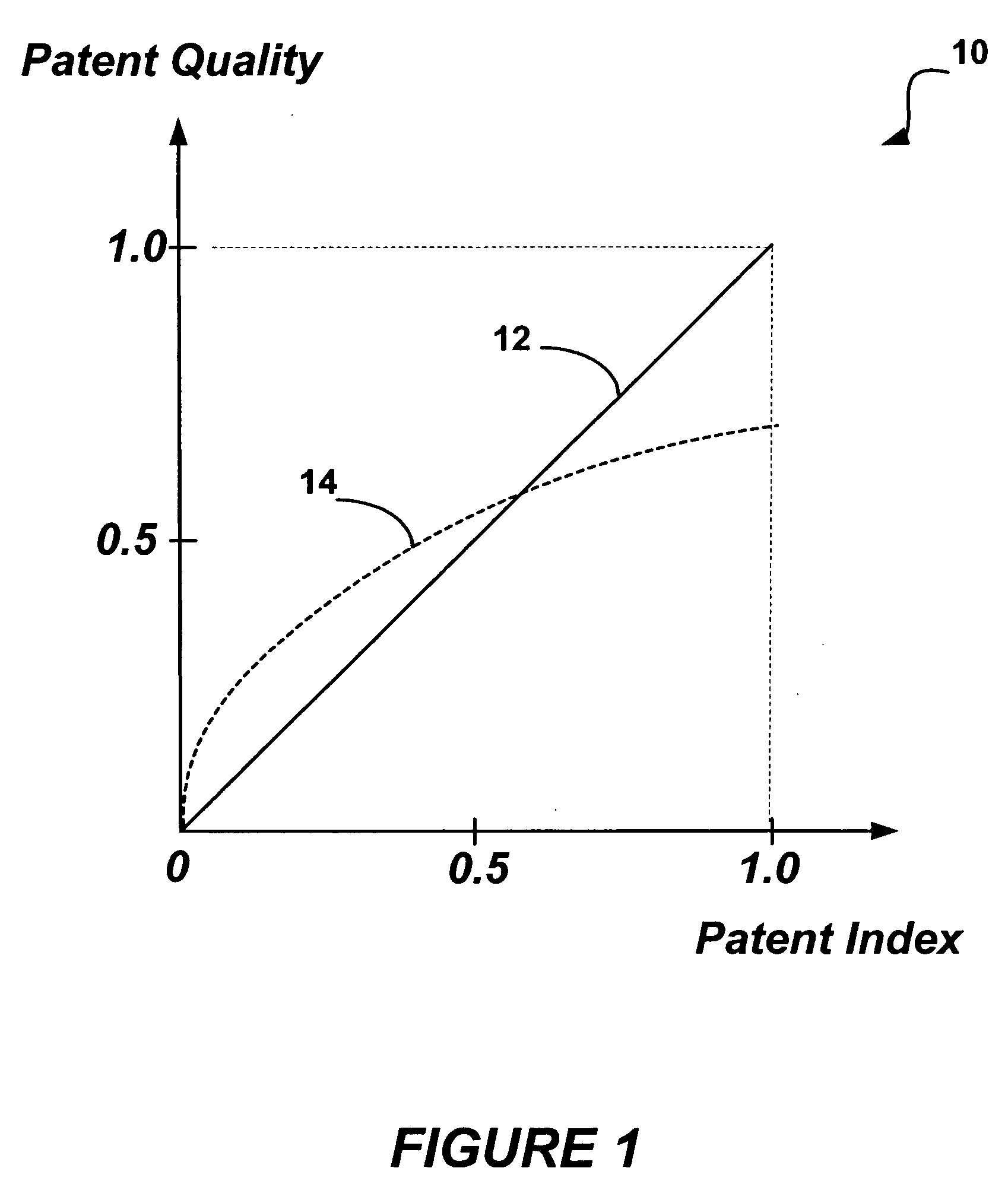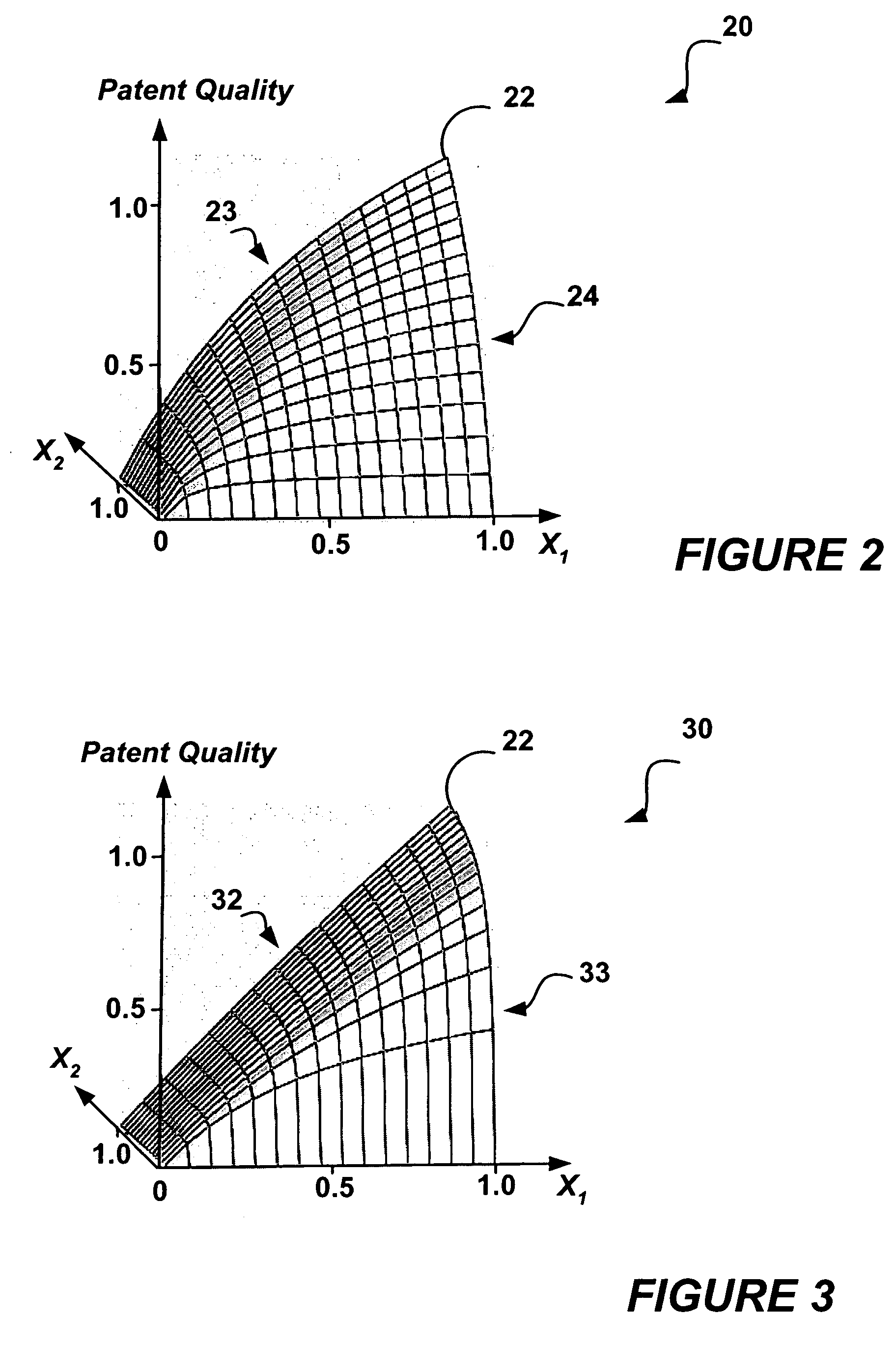System and method for patent evaluation and visualization of the results thereof
a technology of patent evaluation and visualization, applied in the field of patent evaluation, can solve the problems of inconvenient evaluation of patent documents, too broad to be directly applied to patent evaluation without providing further details, and the inability to evaluate patent documents in a practical way, so as to achieve the effect of capturing and overseeing the results of patent evaluation much easier and faster
- Summary
- Abstract
- Description
- Claims
- Application Information
AI Technical Summary
Benefits of technology
Problems solved by technology
Method used
Image
Examples
first embodiment
OF THE INVENTION
[0119] To design a method for patent evaluation based on these rules, let us first consider a simplified situation, when the i-th patent index is solely contributing to the Patent Quality as if there were no other patent indices whatsoever.
[0120] In the first embodiment of the invention, we assume that the contribution of the i-th index into the Patent Quality PQi depends linearly upon this index numerical value as shown below:
PQi=xi; i=1 . . . n; (2)
[0121] However, contrary to the popular belief, when several patent indices contribute to the Patent Quality simultaneously, this dependence changes drastically and becomes non-linear. The roots of this non-linearity become apparent if we re-write the equation (2) using the inverted values 1PQi=1xi;i=1 … n;(3)
[0122] When several indices contribute to the Patent Quality simultaneously, then the inverted value of the Patent Quality becomes equal to the linear combination of the inverted values of respective patent...
second embodiment
OF THE INVENTION
[0139] A method for patent quality evaluation according to the second embodiment is also based on a non-linear relationship between the PQ and patent indices, which conveniently satisfies the rules 1-5 set out above. In the second embodiment, contrary to the assumption (2) made in the first embodiment of the invention, we assume that the contribution of the i-th index depends non-linearly upon its numerical value, even though when there are no any other indices contributing to the PQ (i.e. even though the i-th index is solely contributing to the PQ). The degree of non-linearity is determined by a parameter of non-linearity “b”. It is measured on the scale of [0, ∞], with b=1 indicating the complete absence of non-linearity.
[0140] Let us modify the inverted values of PQ1 and xi so as to bring them into the range of [0, ∞], coinciding with the range of variations for the parameter of non-linearity “b”, i.e. we will use (1PQi-1)
instead of 1PQi,
and (1xi-1)
instead ...
PUM
 Login to View More
Login to View More Abstract
Description
Claims
Application Information
 Login to View More
Login to View More - R&D
- Intellectual Property
- Life Sciences
- Materials
- Tech Scout
- Unparalleled Data Quality
- Higher Quality Content
- 60% Fewer Hallucinations
Browse by: Latest US Patents, China's latest patents, Technical Efficacy Thesaurus, Application Domain, Technology Topic, Popular Technical Reports.
© 2025 PatSnap. All rights reserved.Legal|Privacy policy|Modern Slavery Act Transparency Statement|Sitemap|About US| Contact US: help@patsnap.com



